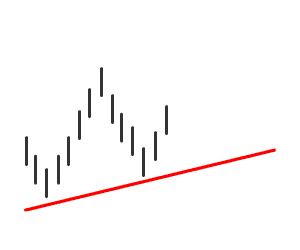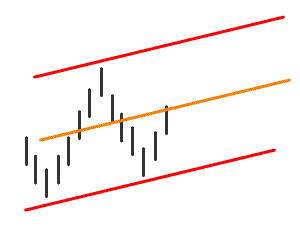Markets will often move in repeating patterns or ranges, there are a number of different names for this but breaking away from the titles, our obligation as traders or investors is to make good choices in our investments.
As observers watching a market our best opportunities come when we identify repeatable conditions. Sometimes we see that the price action is moving between an upper range and a lower range, sometimes called a channel. As a trader this offers some nice trading options, the biggest being a repeatable opportunity trading into the active “leg”.
A couple of things to consider when analysing a channeling trade;
- Trade with the dominant channel direction – One of the most viable principles in trading is to follow the more dominant direction. This is because the dominant direction will be more profitable. Of course it is possible to trade against this direction, though more care should be taken as it would be considered a higher risk trade. When channels are flat in direction profitable trades may exist in both directions.
- Connect your peaks or troughs – This is to gain an understanding of when the market is reaching the extremities of the trading ranges. Normally the channel is identified by connecting either a couple of troughs or peaks. Duplicate the first line and move it to the other side, often this can be done before the 4th leg has started. (see top image). Once the second peak is in place further adjust the angles of your lines.
- Larger channels take longer to reach the extremities, but provide you with a bigger return, smaller channels are faster and more frequent.
- Plot a mid point – The mid point of the channel will often cause the price to pause, stutter, stall or even reverse. This is more important on larger channels, but as valid on smaller ones.
In very simplistic terms – Buy at the bottom, Sell at the top and stay out of the middle. Now that’s about as generic as I can be, your trading rules should be a little more thorough.
From a reality perspective we will never trade the complete width of the channel, you will loose a little on each side. So determining whether or not a channel trade is viable is an easy choice – how far is it (in $) from the channel lines? This is the potential profit on the trade. When you shave from both sides, is there enough room for you to get in and out and make a buck?
Channels can be some of the best opportunities we have as traders, so do 2 things. Firstly, watch your channel regularly, identify the movements and speed – be ready for the next move. And second, tell me about it 🙂
Happy trading


You really make it seem really easy together with your presentation but I to find this topic to be really one thing that I feel I would never understand. It kind of feels too complex and extremely huge for me. I’m taking a look forward in your next submit, I will attempt to get the grasp of it!